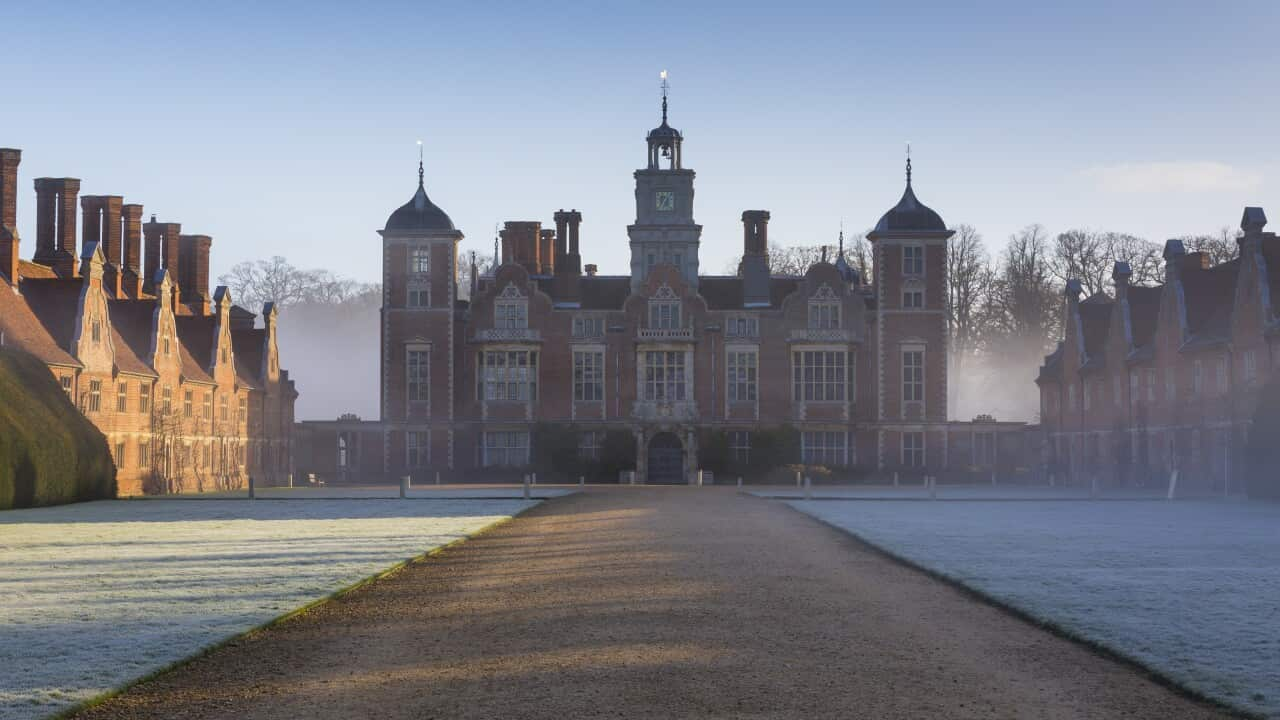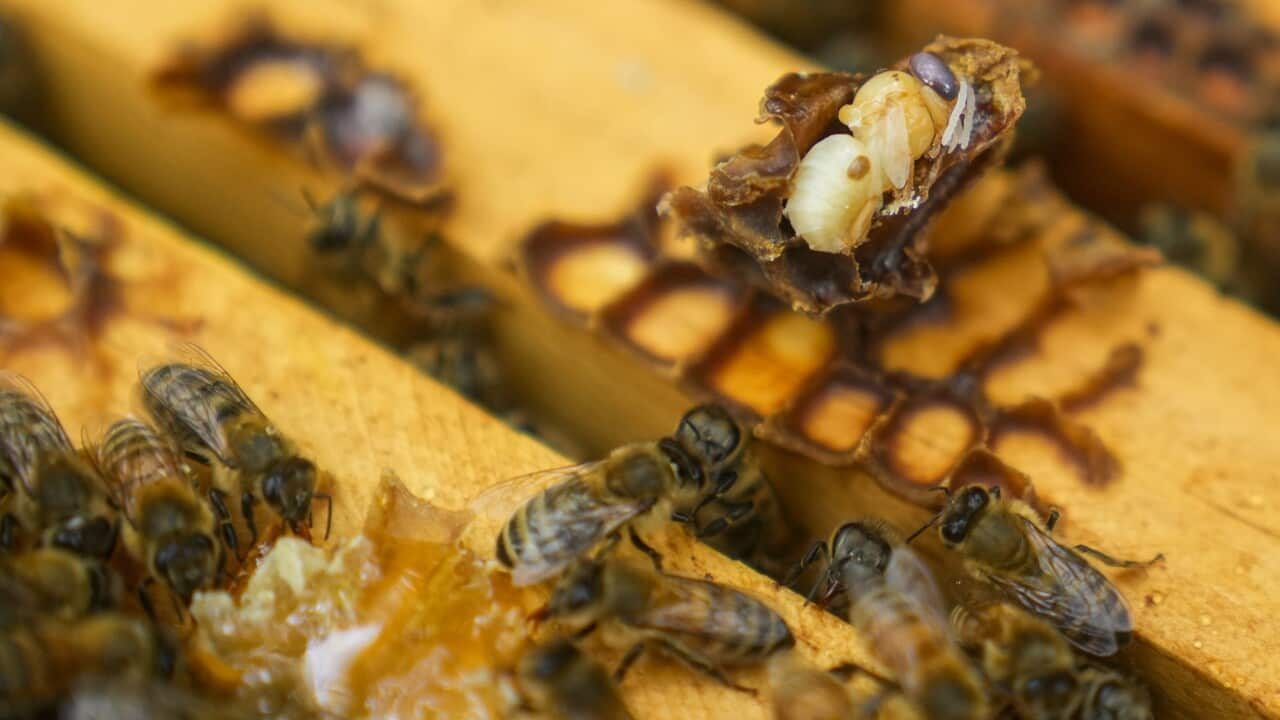Italian
Nella pittoresca cittadina di campagna di Norfolk, in Inghilterra, Blickling Hall ha resistito all'usura del tempo.
La pandemia di coronavirus ha causato una brusca frenata alle visite.
"A magnificent house, 55 acres of garden, a wonderful lake, and goodness me, we will revisit this and have a real look later on in detail."
Il palazzo in mattoni del 17esimo secolo è un sito culturale protetto.
Si posa sulle fondamenta di un palazzo prezioso dal punto di vista storico.
Si pensa che l'edificio originario sia stato il luogo di nascita di Anna Bolena, l'ex regina d'Inghilterra e seconda moglie di Re Enrico VIII, che la fece decapitare nel 1536.
Oggi Blickling Hall è sotto il controllo del National Trust, l'ente di salvaguardia più grande d'Europa.
Kenny Gray del National Trust racconta come ci siano innumerevoli motivi per cui l'ente si prende cura dell'edificio.
"Well, this is like a five-star Michelin restaurant. There's wool, there's silks, there's you name it, it's a smorgasbord of all sorts of goodies."
All'interno di Blickling Hall si trova un drappeggio ritenuto essere uno dei soli due pezzi sopravvissuti dal baldacchino del trono della Regina Anna.
Il palazzo giacobino possiede anche una delle collezioni di manoscritti e libri più significative dal punto di vista storico in Inghilterra.
Ma mentre il Regno Unito subiva i lockdown a causa del COVID-19, gli animali del Regno hanno avuto l'occasione di avventurarsi dove normalmente non avrebbero potuto.
Sono state avvistate capre vagare in strade del Galles, un branco di cervi pascolare nei giardini di ville a Londra e, all'interno di Blickling Hall, le tarme non sono state più disturbate dai visitatori.
Ellie Hobbs del National Trust ha rivelato che le tarme comuni sono in piena frenesia alimentare sui tappeti dell'appartamento reale, e su altri tessuti in tutto l'edificio.
"They like quiet, dark spaces and with no visitors coming through, it's been the perfect environment for them just to hunker down (stay down) and sadly eat through our carpets if we would allow it."
In aggiunta al lockdown, anche l'inverno mite e le condizioni da primavera anticipata hanno fatto balzare i numeri degli insetti infestanti a livelli record.
Il National Trust stima che durante la pandemia la popolazione delle tarme in tutte le sue proprietà sia cresciuta dell'11 per cento.
Ma ora lo staff a Blickling Hall sta reagendo, con delle vespe microscopiche.
"These wasps are already used in the UK, they are native. When we hope to get visitors back, they don't sting. You won't even see them, they're point five of a millimetre."
I conservazionisti proveranno il metodo del rilascio delle vespe come forma di controllo dei parassiti.
Depositeranno le loro uova tra le uova delle tarme, uccidendole prima che abbiano la possibilità di mangiucchiare altra tappezzeria dal valore inestimabile o opere d'arte.
Le vespe si trasportano in incubatoi grandi come una carta di credito e ne verranno dispiegate a migliaia.
Verranno combinate con feromoni femminili delle tarme, rilasciati per confondere i maschi e ridurre le loro possibilità di trovare una compagna.
Se la sperimentazione avrà successo a Norfolk, il piano si allargherà all'implementazione delle vespe nelle altre proprietà del National Trust nel Regno Unito per protggere altri patrimoni di valore.
English
In the picturesque countryside of Norfolk, England, Blickling Hall has withstood the test of time.
The coronavirus pandemic caused tours to come to a grinding halt.
"A magnificent house, 55 acres of garden, a wonderful lake, and goodness me, we will revisit this and have a real look later on in detail."
The 17th-century red-brick mansion is a cultural heritage site.
It sits on the foundations of an historically precious manor.
The original manor was thought to have been the birthplace of Anne Boleyn, former Queen of England and second wife of King Henry the 8th, who had Anne beheaded in 1536.
Today, Blickling Hall is owned by the National Trust, Europe's largest conservation charity.
The National Trust's Kenny Gray says there are countless reasons his charity looks after the building.
"Well, this is like a five-star Michelin restaurant. There's wool, there's silks, there's you name it, it's a smorgasbord of all sorts of goodies."
Inside Blickling Hall is a counterpane thought to be one of only two surviving pieces from Queen Anne's throne canopy.
The Jacobean mansion is also home to one of the most historically significant collections of manuscripts and books in England.
But as the UK experienced COVID-19 lockdowns, animals around the kingdom were given a chance to venture where they normally couldn't.
Goats were spotted wandering through Welsh streets, a herd of deer grazed on the lawns of London's housing estates, and inside Blickling Hall, moths were no longer disturbed by visitors.
Ellie Hobbs from the National Trust says the common house moths are having a feeding frenzy on the rug in the state bedroom, as well as other fabrics all around the mansion.
"They like quiet, dark spaces and with no visitors coming through, it's been the perfect environment for them just to hunker down (stay down) and sadly eat through our carpets if we would allow it."
As well as lockdowns, the mild winter and early spring weather conditions have boosted the pest numbers to record levels.
The National Trust estimates that during the pandemic, moth populations across its properties have grown by 11 percent.
But now, staff at Blickling Hall are fighting back, with microscopic wasps.
"These wasps are already used in the UK, they are native. When we hope to get visitors back, they don't sting. You won't even see them, they're point five of a millimetre."
Conservationists will be trialling the release of the wasps method as a form of pest control.
They lay their eggs inside the moth eggs, killing them before they get the chance to nibble on another priceless tapestry or artwork.
The wasps come in credit card sized hatcheries and will be deployed in their thousands.
That will be in combination with female moth pheromones, released to confuse male moths and reduce their chance of finding a mate.
If the trial is a success in Norfolk, the plan is to roll the wasps out to other National Trust properties throughout the UK and protect more valuable heritage.
Report by Tys Occhiuzzi




